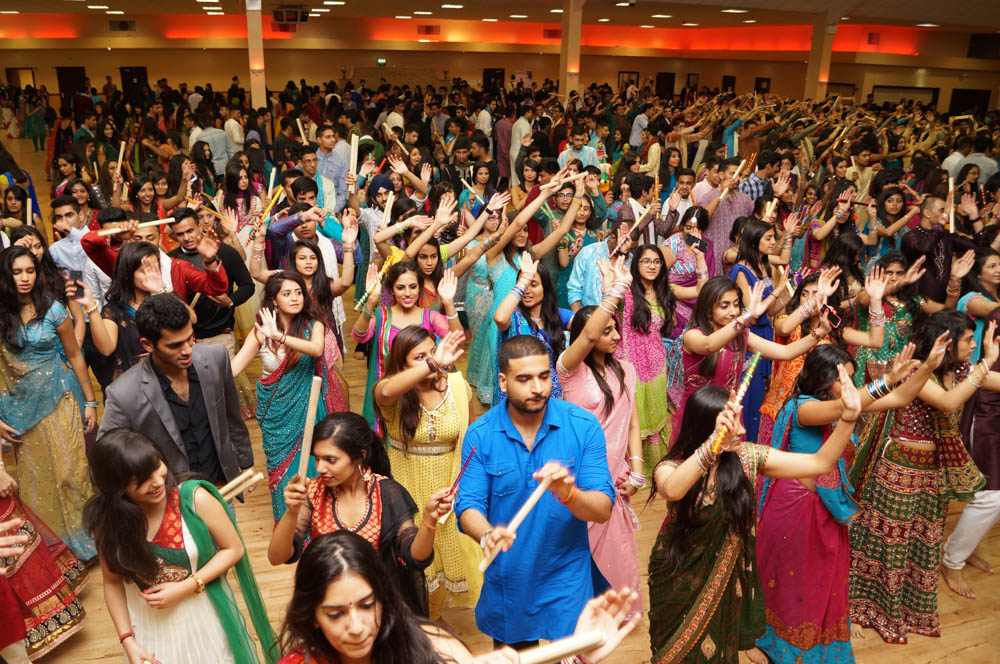NHSF (UK) Learning Team
Garba is an exceptionally well known and enjoyable folk dance that usually takes place during Navratri. Originating from Gujarat, this dance is now popular throughout India and indeed the world, as our NHSF (UK) garba events have proven! But what is it all about?
Why?
‘Garba’ derives from the word “Garbha” meaning womb in Sanskrit. It refers to the clay pot that is traditionally placed at the centre of the dancing circle. A lamp is placed inside, which is why it is also often called “Deep garbha” and the Devi is invoked into this pot. Garba then takes place in a circular fashion around this central altar as a reverence to the Devi. Dandiya is also often performed (a folk dance where two sticks are used), which imitates the battle of the nine nights during Navratri between the Devi and the evil demon Mahishasura. (Click here for more information on Navratri)
 The womb is a reminder that this festival is a celebration of the feminine element. We are all the Devi’s children and there is no discrimination in Her blessings. Inside, the light is a symbol of the eternal power present in every woman – the ability to create new life. It was believed that through worshipping the Devi in this form, She would bless her devotees with children that were devoted, strong and intelligent. And so in some sense garba was a fertility dance that both revered and invoked the ability to bear a child. This maternal instinct is embodied by the flame that shines in the centre of the symbolic womb.
The womb is a reminder that this festival is a celebration of the feminine element. We are all the Devi’s children and there is no discrimination in Her blessings. Inside, the light is a symbol of the eternal power present in every woman – the ability to create new life. It was believed that through worshipping the Devi in this form, She would bless her devotees with children that were devoted, strong and intelligent. And so in some sense garba was a fertility dance that both revered and invoked the ability to bear a child. This maternal instinct is embodied by the flame that shines in the centre of the symbolic womb.
By encircling this “womb” with music, dance and joy, we are worshipping this creative energy, putting it at the centre of our activities: without it, we wouldn’t exist. But also it reminds us of the cyclical nature of the organic creative energy in a woman, of time and of karma. Yet at the heart of it all, is the ever burning, untouched divine light. Everything comes full circle, signifying the inner unity and connectivity of the universe.
In some ways, the vessel holding the light is a symbol of ourselves: we are the clay pot that houses the divine light of the Devi. And so by coming together and dancing, laughing, venerating the Goddess, garba teaches us to recognise that light both in ourselves and in the people around us.
GARBA
Deity Durga (Devi, the Goddess)
Time of year: Navratri
Meaning From “garbha” meaning womb in Sanskrit – referring to clay pot with lamp placed in the centre
Represents • Fertility dance seeking blessings for children
• The feminine power present in every woman that has the ability to create new life
• Divinity is present within every one of us and our body is just a clay pot that upholds that power
• That the Devi and the creative energy She represents is central to our lives
• Revolution and change are ongoing but the Devi is eternal

